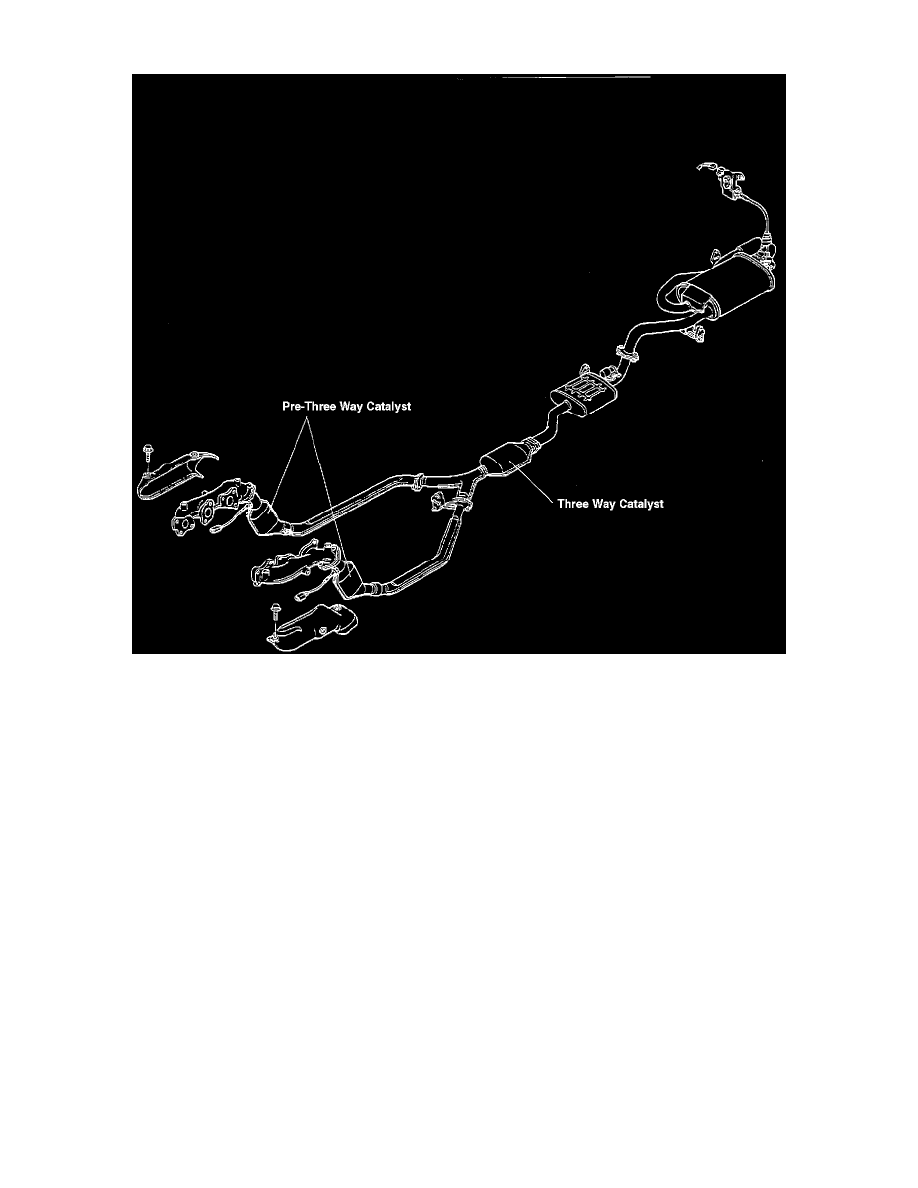929 V6-3.0L DOHC (1993)

Catalytic Converter: Description and Operation
Exhaust System And Catalytic Converter
PURPOSE
Catalytic converters are used downstream of the exhaust manifolds to reduce oxides of nitrogen (NOx) and oxidize hydrocarbons (HC) and carbon
monoxide (CO). Converters contain the catalyst elements platinum, rhodium and palladium, which promote oxidation and reduction reactions at
high temperatures. Emissions are converted into carbon dioxide, water vapor and nitrogen.
Pre-three way catalysts are installed in the exhaust pipes between manifolds and the main three-way converter. These converters heat up rapidly to
oxidize excess hydrocarbons that occur in the exhaust during cold engine operation. They also heat the main converter to operating temperature
more quickly.
THE OXIDATION REACTION
In order to change HC and CO into harmless materials, catalytic elements (platinum and palladium) start an oxidation, or burning, reaction in the
catalytic converter. Oxidation is the addition of oxygen to an element or compound. During the oxidation process, oxygen mixes with excess HC
and CO to form H2O and CO2. During the oxidation reaction process, considerable heat (900°F to 1,600°F) is generated. Caution should be taken
while working on or around converters and other exhaust system components.
THE REDUCTION REACTION
Reduction is the chemical removal of oxygen--the opposite of oxidation. The reduction reaction changes NOx to harmless nitrogen and free
oxygen, which is then consumed in the oxidation reaction with other pollutants. Catalytic elements required for the reduction process are platinum
and rhodium.
Three way catalytic converters (TWC) are designed to react with all three major exhaust pollutants, but work best to reduce NOx when the
exhaust CO level is between 0.8 and 1.5 percent. As CO level increases or decreases from that percentage, converter efficiency decreases. Exhaust
gas first passes through the catalyst where oxides of nitrogen are reduced, then through the catalyst where HC and CO are changed to H2O and
CO2.
